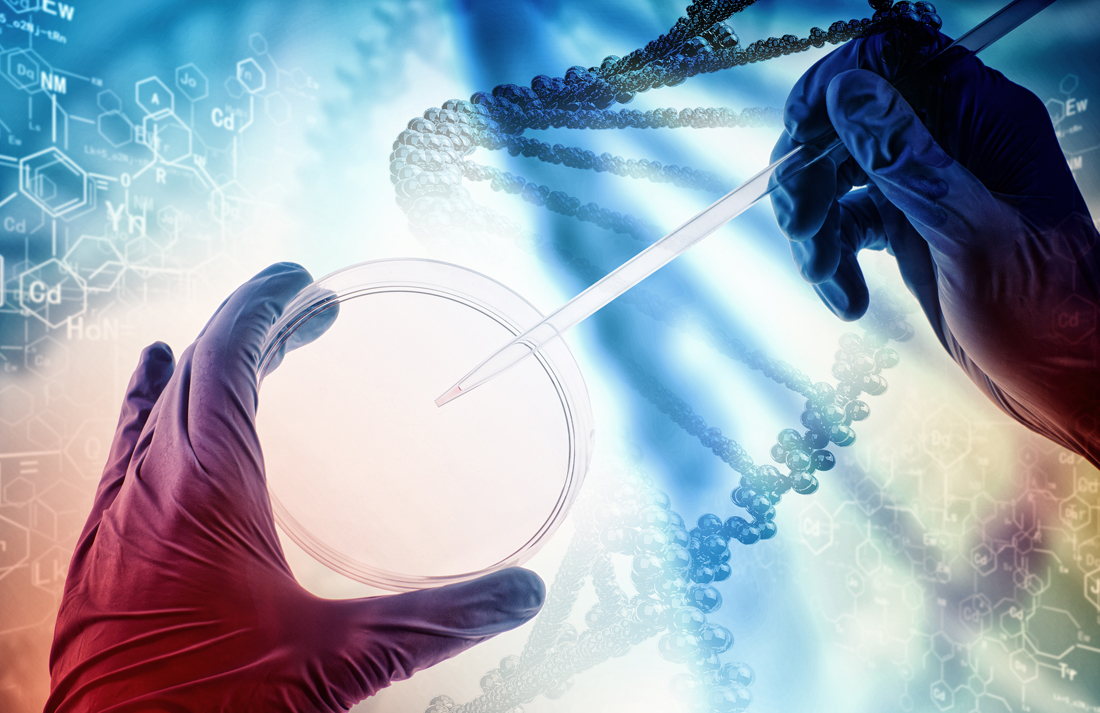
Ask any bioscience researcher about leading trends in medical science and, at some point, you're likely to hear a lot of enthusiasm around the phrase personalized medicine.
That's treatment based on the individual's particular disease state, risk factors, and most importantly, genetic profile. And it's already yielding unheard-of profits for traders and investors.
As scientists reach the discovery limits of "one-size-fits-all" drugs and the ailments that respond to them, such as infections and circulatory diseases, they find themselves up against tougher, wilier, more intractable challenges. . .
Getting to the Core of the Issue and the Market Behind It
Those include genetically mediated conditions like cystic fibrosis, Down syndrome, and sickle cell anemia, as well as diseases that present subtle variations in phenotype (observable characteristics) and genotype (genetic characteristics), such as cancers and inflammatory bowel diseases, in which diseased cells mutate, interact with the nearby environment, and may or may not respond to medications that usually work.
To get at diseases like this, we've got to dig down into the nitty-gritty of the stuff that makes us who we are - DNA (deoxyribonucleic acid). At the very heart of that process is a technological breakthrough called genome sequencing. And that's where the money is - providing the devices that can either do this or use the data from this technology to provide useful information to clinicians.
Analysts estimate it represents a $20 billion market.
Genome sequencing, a map of your genes, allows us to determine who's at risk for which diseases, so we can take steps to prevent particular illnesses from ever happening. If you find out you're genetically predisposed to lung cancer, for example, you'll want to avoid smoking and anything else that might inflame your lung tissue.
A detailed map of your genome may also help determine if you're likely to respond to a particular medication for your specific health condition. If you have a tumor and we can figure out exactly what medications, either alone or in combination, its cells are going to react to, you have a much better chance of killing it, or at least managing its growth.
In fact, there is literally no area in bioscience research that has not felt the profound influence of this technology.
What Is Genome Sequencing?
So exactly what do we mean when we talk about sequencing? Unless you're a science geek (like me, I admit it), a detailed answer would make your eyes glaze over pretty quickly, so I'll try to keep the explanation brief and simple.
Your genome comprises the entire collection of genetic instructions in your body, which determine all of the characteristics that make you who you are, from the color of your eyes and basic personality traits to your risk for many diseases. The nucleus of each cell in your body contains a genome.
Each individual set of instructions within the genome is called a gene, which is actually a discrete segment of a long DNA strand. The instructions tell cells how to make molecules called proteins that determine who we are and how we function. A single mistake in a gene can cause disease.
DNA is the substance that carries our basic genetic information in the form of four chemical bases (adenine [A], thymine [T], guanine [G] and cytosine [C]), which pair up in various combinations to form a long, twisted, ladder-like strand—the double helix we're all familiar with.
These base pairs occur in a special order, and about 1% of them are different from person to person. (N.B.: For those of you with a bioscience background, I'm skipping an explanation of alleles here.)
The human genome contains nearly 3 billion of these base chemicals, and genetic sequencers determine their order.
So think of it this way. The four chemical bases are an alphabet. They pair up to make words called base pairs. The words connect in segments to make sentences (genes), and the sentences string together to make a story (genome). If you change the order the words or sentences come in, the story changes.
Sequencers read the story and tell it to us. And because they yield such valuable information, they're selling like shovels in a gold rush.
A Brief History of Sequencers
The Human Genome Project, which started in 1990, created the first complete map of the human genome. It required the cooperative input of researchers in 18 different countries. More than 200 labs in the U.S. alone got involved. And with all that manpower, it took 13 years to finish.
So it was slow, and the process was cumbersome. But since then, sequencing technologies have made a quantum leap forward. It's been like watching human flight go from hot air balloon to starship in a single generation.
It all started with the advent of a technology called capillary electrophoresis (CE)-based Sanger sequencing, developed by Frederick Sanger in 1977, which allowed scientists to glean genetic information from any biological system. The Human Genome Project used early CE technology to complete its task. But Sanger sequencing also had some technical limitations that kept scientists from gleaning all the information they needed.
Researchers wanted something better, and they found it in Next Generation Sequencing (NGS), a revolutionary technology that works so rapidly it can sequence more than five human genomes in a single run, at a cost of less than $5,000 per genome, and the whole process takes just a few days.
Profit from this Affordable Entry in the Market
Illumina Inc. (Nasdaq: ILMN) has been the superstar of NGS success stories over the past couple of years. Its broad spectrum of technologies in this field, along with strategic partnerships with Quest Labs, AstraZeneca, Sanofi, and Jansen, have allowed it to quadruple its price per share (PPS) since this time in 2012. It now stands at about $172.
That makes it a bit unaffordable and leaves it with a somewhat unimpressive upside in the near term - about 14%, if it hits its price target. And with its various partnerships and acquisitions, it has in short order become the 500 lb. gorilla on the block - hard to compete with.
So has the big opportunity in genetics already passed the investor by?
Not at all. Other firms have found innovative ways to get into the field without going head-to-head with the big guy.
One of the more interesting choices is a company called Affymetrix Inc. (Nasdaq: AFFX) located in Santa Clara, California. AFFX doesn't concern itself with whole genome sequencing. Its focus isn't on mapping every gene you have. Instead, it uses another approach called microarray technology, which looks at only the active genes in a cell.
Here's why: although all cells in an organism contain the same genes, different genes are active in different cell types. Discovering which genes are active in which cells gives researchers a big head start in understanding what normal looks like and what happens when the genes misfire. Back in the bad old days, scientists could look at only a few genes at a time. But with microarray technology, they can look at thousands of genes simultaneously.
Microarrays have been particularly valuable in studying cancer. By knowing how cells are behaving at a genetic level, you can design treatments that directly target specific tumors - in other words, personalized medicine. And by observing how those treatments affect cancer cells, you can design even better treatments.
Manufacturing and marketing microarray technology has increased AFFX share price by nearly two-and-a-half times in the past 24 months. It now trades in the very affordable $8.60 to $8.85 range, and I believe it will go much higher over the next 24 months.
In early 2013, AFFX implemented a corporate restructuring plan that focuses on realigning its product portfolio, stabilizing its core business, positioning for growth, and increasing profitability. So far, it seems to be working. Revenues in Q3 shot up 7.5% and are expected to reach $340 for the year, up from about $330 million last year. Earnings per share were up 75% from the previous quarter.
It would be hard to find a more promising company in any sector of the stock market.
Microarray technology is a great niche inside of the genomic sequencing technological revolution, and choosing a great company in the field, like AFFX, can pay off handsomely for any investor or trader willing to jump into the gene pool.
Ernie Tremblay
Money Morning



































